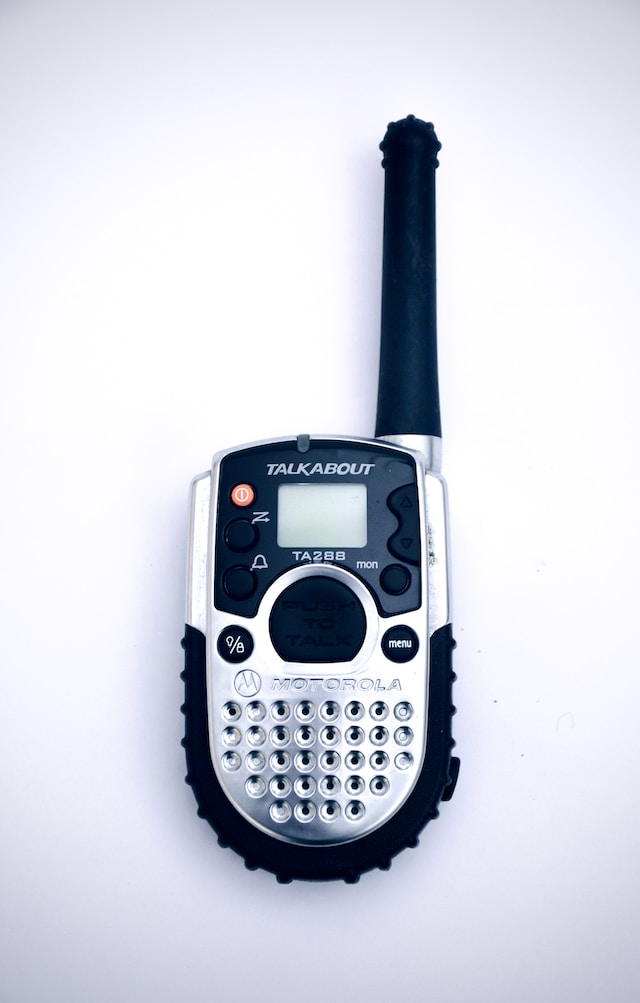While cell phones are commonplace in our everyday lives, there are certain jobs where radios are necessary. These devices provide a wide range of benefits that mobile phones cannot, including emergency communication without the need for working cell towers. Two-way radios (walkie-talkies) are built to be durable with rugged models that meet military standards and can survive drops onto hard surfaces and extreme temperatures.
Safety
Two-way radios, called walkie-talkies, allow users to transmit and receive voice communications. They work off single-frequency wireless signals that can travel long distances, even in areas without cellular or GPS signals.
The device converts a speaker’s words into vibrations or fluctuating electric currents broadcast over a pre-arranged channel. When another handset hears these radio waves, it picks up the message and broadcasts it over its loudspeaker. When the speaker finishes speaking, they say ‘over,’ and their handset returns to listening mode. Portable two-way radios such as the Motorola mobile radios are packed with safety features such as man-down and lone-worker functions that alert many people immediately to any issues or accidents. This makes them an ideal choice for workers on building sites, mines, and oil rigs, where they can be used as the main form of communication when working off-grid away from cell service towers.
Efficiency
A handheld radio, a walkie-talkie, is an efficient communication method between team members. Unlike mobile phones, which transmit constantly during a call, two-way radios only send signals when the push-to-talk button is pressed. This means that staff can talk to one another without interruption and hear each other clearly, particularly in environments with lots of noise. It’s important to note that the quality of your radio and the antenna’s location/height will determine its range. Two-way radios can also be used to communicate with staff in areas without phone or internet signals. This is particularly useful for businesses that operate in remote locations, such as shipping and the oil and mining industries. Emergency services and disaster recovery teams also use these devices.
Flexibility
Whether running a restaurant or overseeing 189 million acres of public lands, your team must stay in touch. That’s why two-way radios continue to be used across various industries. Unlike cell phones, walkie-talkies are designed for industrial use and offer durable hardware built to handle abuse. They also require minimal maintenance, only batteries, and chargers to keep working all day. Depending on your needs, you may need a portable radio that fits into workers’ pockets or a mobile radio that can be installed in a vehicle. You can even add a repeater to your system to boost signal strength and increase coverage. This way, you can communicate with the entire workforce – including those at remote locations. That flexibility makes it easy to adapt to changing conditions and emergencies. A reliable two-way radio can be your lifeline when disaster strikes. This is especially important for industries like manufacturing, security, and hospitality, which rely on instant communication to get the job done.
Communication
Unlike a cellular phone, which transmits throughout the call, walkie-talkies only transmit when the push-to-talk button is depressed. This creates clear communication without worrying about other users interrupting your conversation or your device turning off inadvertently during a shift. Most radios also include features that make the communication process even easier. For example, many models have cloning capabilities to simplify copying radio settings across multiple radios. They’re also designed to be durable, with varying degrees of resistance to vibration, extreme temperatures, salt air, and wet environments. Using two-way radios provides instant communication for various industries and organizations that require immediate or group communication. For example, they’re used by disaster recovery and emergency medical services to communicate with each other and with the public during emergencies. They’re also popular among construction companies and on oil rigs, as they provide constant communication regardless of location or terrain.

